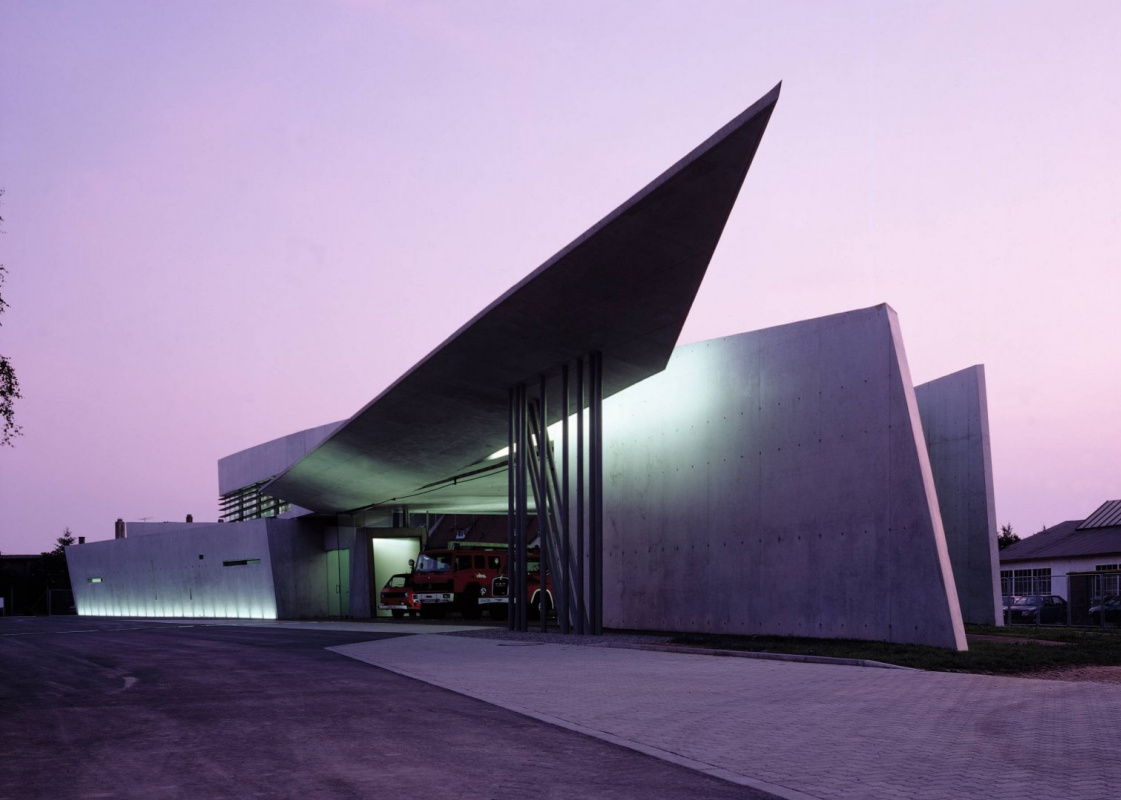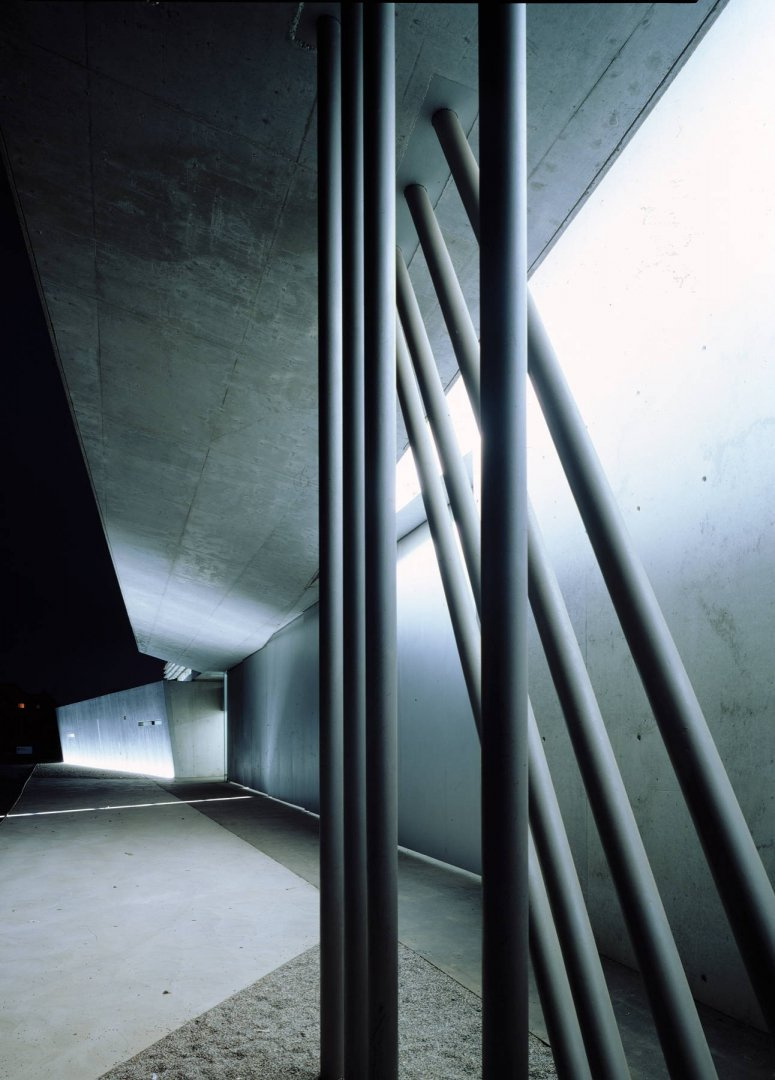log in
Enter site
Login to use Arthive functionality to the maximum
Fire station Vitra
Zaha Hadid • Architecture, 1993
Description of the artwork «Fire station Vitra»
Zaha Hadid had to work hard for many years before the first building was built on her project. And although her unusual and ambitious architectural ideas quickly gained popularity and recognition in the professional environment, Hadid had to be content with the role of “paper architect”. Everything changed in 1989, when the CEO of Vitra furniture company commissioned the American Frank Gehry to build a design museum at the company’s factory in Weil am Rhein, Germany. A year later, he invited Zaha Hadid to design a small fire station building at the plant (the need for his own fire station arose after a major fire at the plant in 1981).
The design of Zaha Hadid was called the “frozen movement”. Due to the dynamic geometry, some critics compared the building with a flying bird. In addition, such a definition was the best suited for the utilitarian side of the building: for the fire service it is important to respond quickly to emergencies and be prepared at any time to break loose. The structure of Hadid is spared from unnecessary decor and non-functional decorations - its original function does not imply this. Concrete and glass, sharp corners and seemingly stretched planes create a sense of swiftness and, with seeming simplicity, attract the eye precisely because of the dynamism of the design, and not the abundance of decor. According to the architectural photographer Helen Binet, Hadid has demonstrated completely new concrete working possibilities, thus creating her own “calling card”: “Thanks to her, concrete has become something completely different.”
Despite the fact that the Hadid building was equipped with all the premises necessary for the fire station, some time later it was decommissioned. Critics said firefighters did not like the lack of color and the empty vertical and horizontal planes. However, be that as it may, this structure gave an excellent start to the career of Zaha Hadid. The former fire station now serves as an exhibition space at the Vitra Design Museum.
Author: Evgenia Sidelnikova
The design of Zaha Hadid was called the “frozen movement”. Due to the dynamic geometry, some critics compared the building with a flying bird. In addition, such a definition was the best suited for the utilitarian side of the building: for the fire service it is important to respond quickly to emergencies and be prepared at any time to break loose. The structure of Hadid is spared from unnecessary decor and non-functional decorations - its original function does not imply this. Concrete and glass, sharp corners and seemingly stretched planes create a sense of swiftness and, with seeming simplicity, attract the eye precisely because of the dynamism of the design, and not the abundance of decor. According to the architectural photographer Helen Binet, Hadid has demonstrated completely new concrete working possibilities, thus creating her own “calling card”: “Thanks to her, concrete has become something completely different.”
Despite the fact that the Hadid building was equipped with all the premises necessary for the fire station, some time later it was decommissioned. Critics said firefighters did not like the lack of color and the empty vertical and horizontal planes. However, be that as it may, this structure gave an excellent start to the career of Zaha Hadid. The former fire station now serves as an exhibition space at the Vitra Design Museum.
Author: Evgenia Sidelnikova




